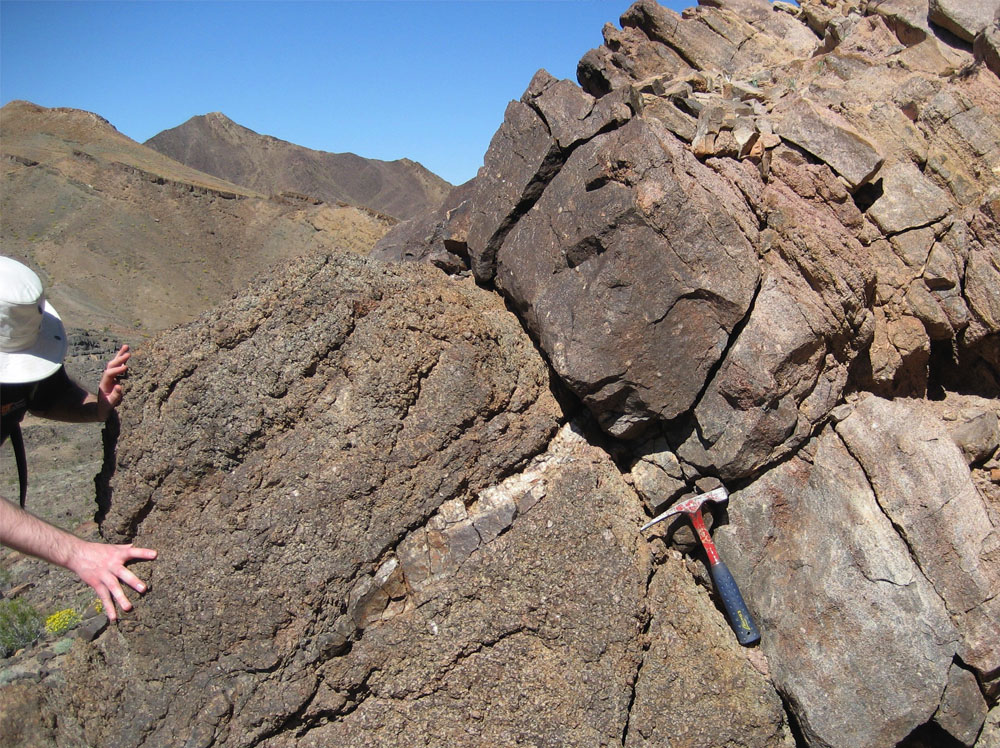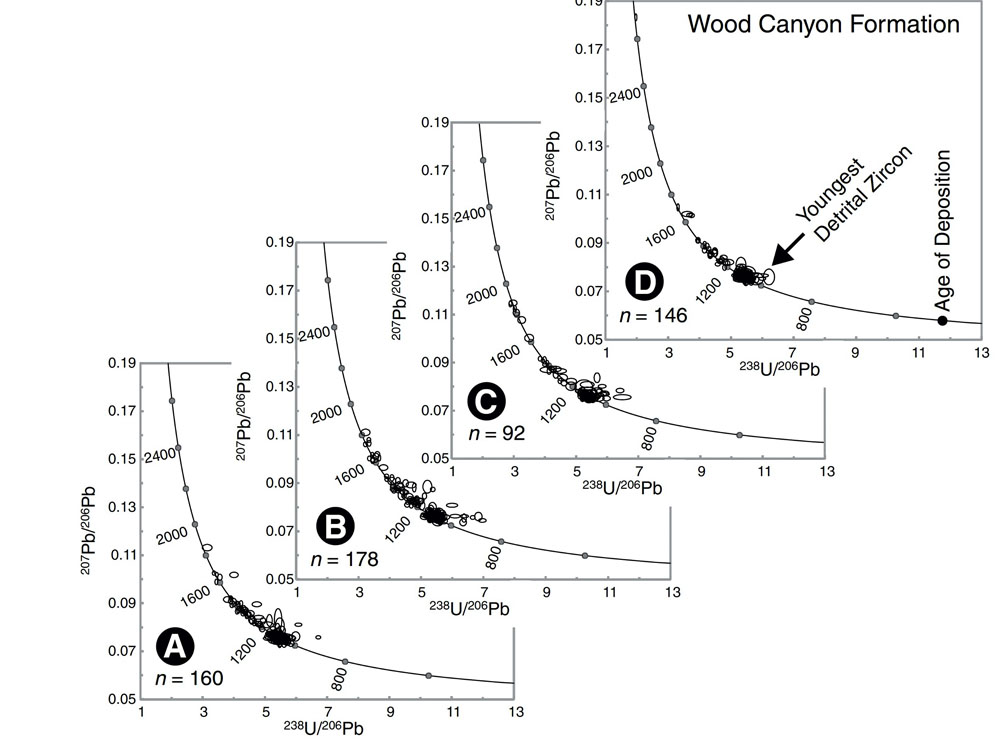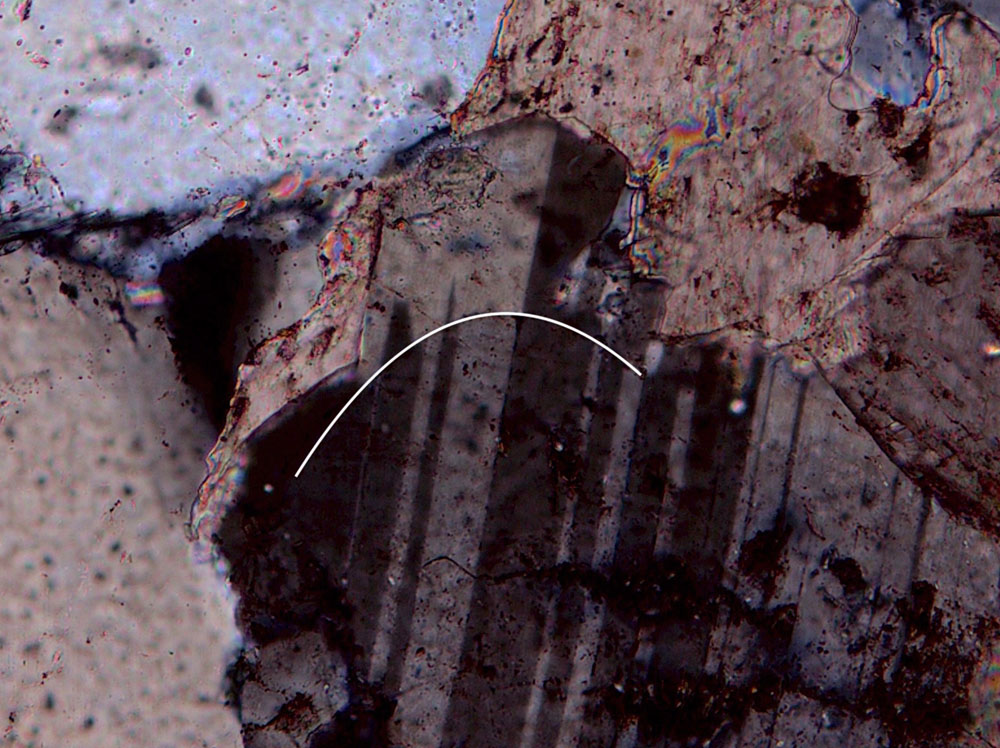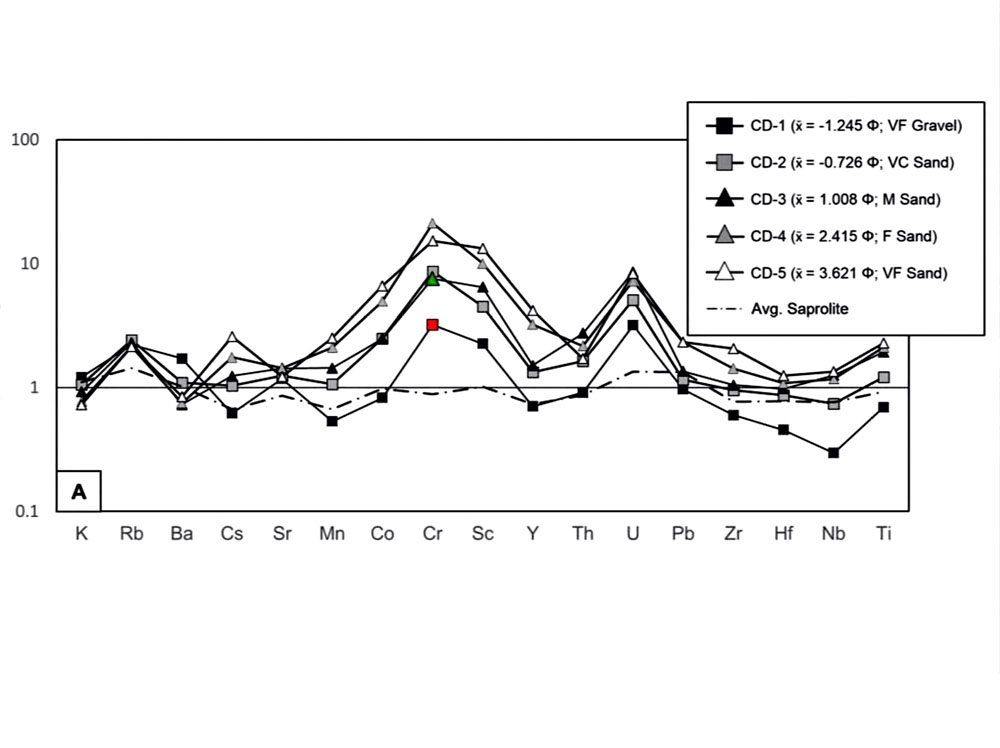
Clastic Petrogenesis & Provenance
I have been taking a mass-balance, multi-element, geochemical approach, accompanied by petrography and image analysis, to systematically understand the role of tectonic setting, provenance, chemical weathering, and climate conditions in the generation of siliciclastic sediments. I continue to study paleoclimatic and provenance evolution of Neoproterozoic through Cambrian aged clastic sediments in California and Nevada. One goal has been to identify the roles of paleoweathering, provenance, and tectonic setting in shaping sediment composition, which shows a repeated cyclicity from arkose to quartz arenite. Feldspathic sediments have been interpreted as “tectonic” in origin, yet they are interleaved with quartz arenites. In broad terms, I am asking whether sedimentary rock composition is controlled by crustal uplift or climate or both? As part of this research, in collaboration with Scott Samson at Syracuse University, I am working on a study investigating the petrogenesis of Quaternary clastic sediments formed in a hot, arid (Mojave Desert, CA) climate. We are working at a site where sediments were derived from a granodiorite pluton through a thin weathering profile. In theory, the sediment shield derived from weathering of the bedrock should essentially be identical to the source composition. However, we are finding that this is not the case using a number of conservative elements (such as the REE), and commonly used incompatible/compatible element ratios. In short, we are discovering that even in the ideal situation, where chemical weathering is virtually non-existent, sediment compositions start to deviate, even significantly, from their provenance.
Five representative publications:
Brengman, L.A., Fedo, C.M., Whitehouse, M.J., Banerjee, N.R., and Jabeen, I., 2020, Constraining mechanisms of quartz precipitation during silicification and chemical sedimentation in the in the ~2.7 Ga Abitibi Greenstone Belt, Canada: Precambrian Research, v. 351, p. 105946.
https://doi.org/10.1016/j.precamres.2020.105946
Bonich, M.B., Samson, S.D., and Fedo, C.M., 2017, Incongruity of detrital zircon of granitic bedrock and its derived alluvium: an example from the Stepladder Mountains, southeastern California: Journal of Geology, v. 125, p. 337-350.
https://doi.org/10.1086/691146
Muhlbauer, J.G., Fedo, C.M., and Farmer, G.L., 2017, Influence of textural parameters on detrital-zircon age spectra with application to provenance and paleogrography during the Ediacaran–Terreneuvian of southwestern Laurentia: Geological Society of America Bulletin, v. 129, p. 1586-1601.
https://doi.org/10.1130/B31611.1
Fedo, C.M., Young, G.M., and Nesbitt, H.W., 1997, Paleoclimatic control on the composition of the Paleoproterozoic Serpent Formation, Huronian Supergroup, Canada: a greenhouse to icehouse transition: Precambrian Research, v. 86, p. 201-223.
https://doi.org/10.1016/S0301-9268(97)00049-1
Fedo, C.M., Nesbitt, H.W., and Young, G.M., 1995, Unraveling the effects of K-metasomatism in sedimentary rocks and paleosols: implications for paleoweathering conditions and provenance: Geology, v. 23, p. 921-924.
https://doi.org/10.1130/0091-7613(1995)023<0921:UTEOPM>2.3.CO;2




